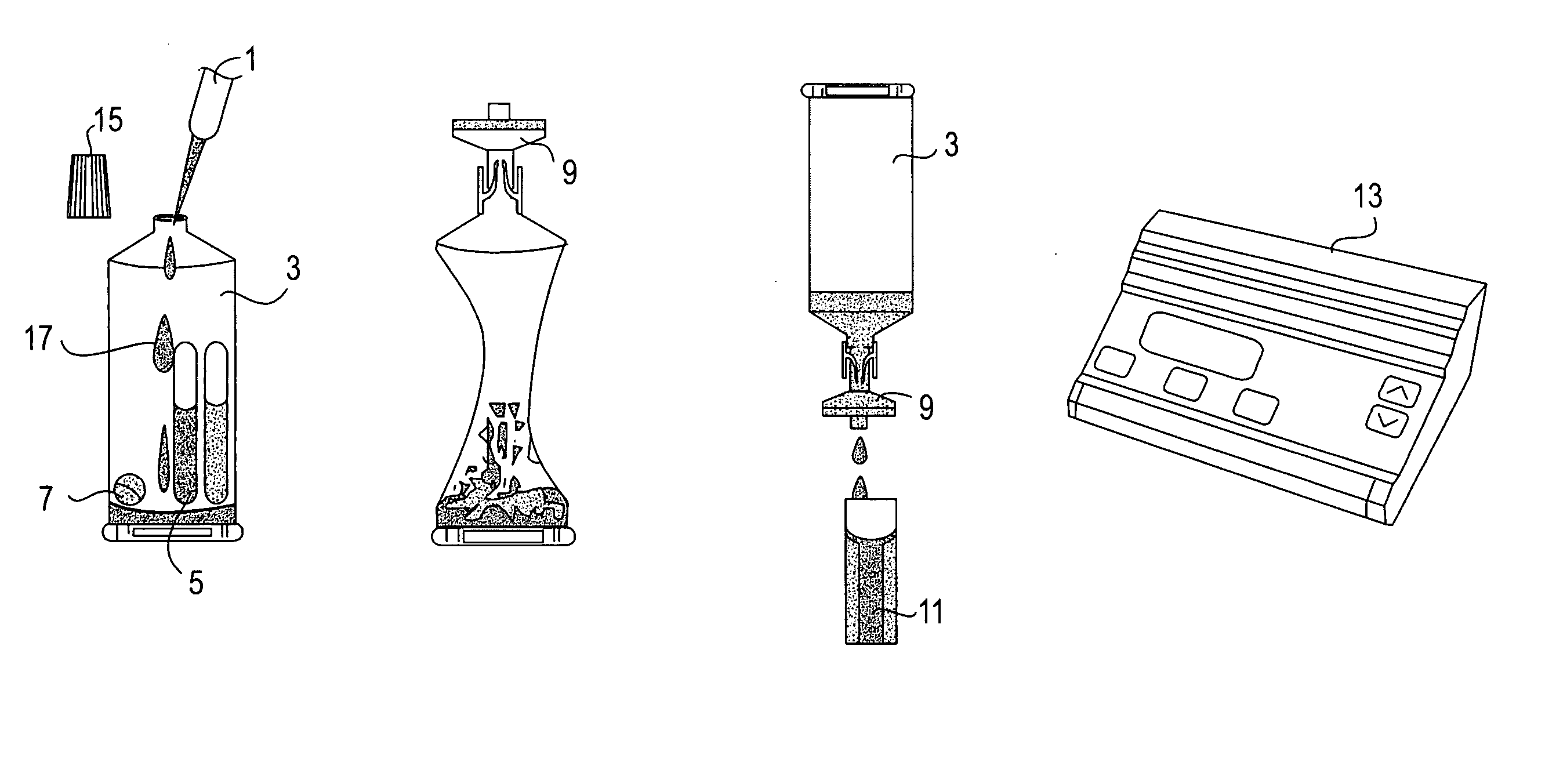Method and test kit for the determination of iron content of in-use lubricants
a technology of in-use lubricants and test kits, which is applied in the direction of fluid controllers, instruments, laboratories, etc., can solve the problems of reducing the usable lifetime of oil, and affecting the service life of oil
- Summary
- Abstract
- Description
- Claims
- Application Information
AI Technical Summary
Benefits of technology
Problems solved by technology
Method used
Image
Examples
Embodiment Construction
[0043] The present invention relates to a method to determine the iron content of in-use lubricants by means of visible spectroscopy and to a test kit which uses the method, which may be conducted on-site. The method of the present invention provides an accurate alternative to the standard Plasma-Atomic-Emission spectroscopic technique (ICP-AES), which must be done in a laboratory.
[0044] The present invention is derived from the development of a method and test kit by visible spectroscopy for the determination of the iron content of in-use lubricants, for example, cylinder drip oils. The method according to the invention gives an accurate assessment of the iron content up to 400 ppm and an indication when the iron content is above that level. The method is applicable to a great diversity of lubricants. These differ in terms of lubricant technology, Base Number (that can range up to 75 BN), and type and amount of contamination (e.g. soot, ash, metal debris, water etc.).
[0045] One a...
PUM
 Login to View More
Login to View More Abstract
Description
Claims
Application Information
 Login to View More
Login to View More - R&D
- Intellectual Property
- Life Sciences
- Materials
- Tech Scout
- Unparalleled Data Quality
- Higher Quality Content
- 60% Fewer Hallucinations
Browse by: Latest US Patents, China's latest patents, Technical Efficacy Thesaurus, Application Domain, Technology Topic, Popular Technical Reports.
© 2025 PatSnap. All rights reserved.Legal|Privacy policy|Modern Slavery Act Transparency Statement|Sitemap|About US| Contact US: help@patsnap.com



